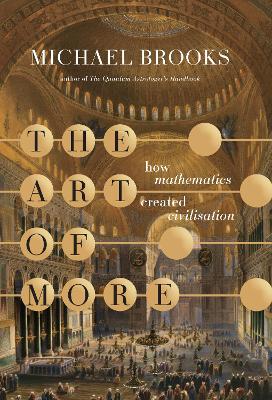Reviewed by annieb123 on
The Art of More is a layman accessible examination of how mathematics has shaped civilization well explained by Dr. Michael Brooks. Due out 18th Jan 2021 from Knopf Doubleday on their Pantheon imprint, it's 336 pages and will be available in hardcover, audio, and ebook format.
This is a fascinating look at mathematical concepts and how they have fostered exploration and discovery and why mathematics is fundamental to, well, everything. The author is wonderfully adept at explaining complex ideas and auxiliary concepts in simple and understandable ways and even for maths-shy readers, there are fascinating and valuable takeaways to be found here.
The chapters are arranged in essay style units written around a field of mathematics: arithmetic, geometry, algebra, calculus, logarithms, imaginary numbers, statistics, information theory, and a summary at the end giving a good broad overview tying everything together, and poking a bit of a pin into Le Corbusier's pomposity and the ascription of mystical significance to mathematical concepts like pi, e, and Planck's constant (and jolly well deserved, says this bionerd). If we can de-mystify, we can maybe make them more accessible, more useful, and more fun to everyone.
Five stars. This would be a good choice for public or school library acquisition, and for readers of popular science. For readers who still have a dog-eared copy of Gödel Escher Bach on their bookshelves, there's a lot to love in The Art of More, and I found Dr. Brooks' style much more accessible and less impenetrable than Dr. Hofstadter's.
Disclosure: I received an ARC at no cost from the author/publisher for review purposes.
Reading updates
- Started reading
- 27 August, 2021: Finished reading
- 22 October, 2021: Reviewed
- Started reading
- 22 October, 2021: Finished reading
- 22 October, 2021: Reviewed
